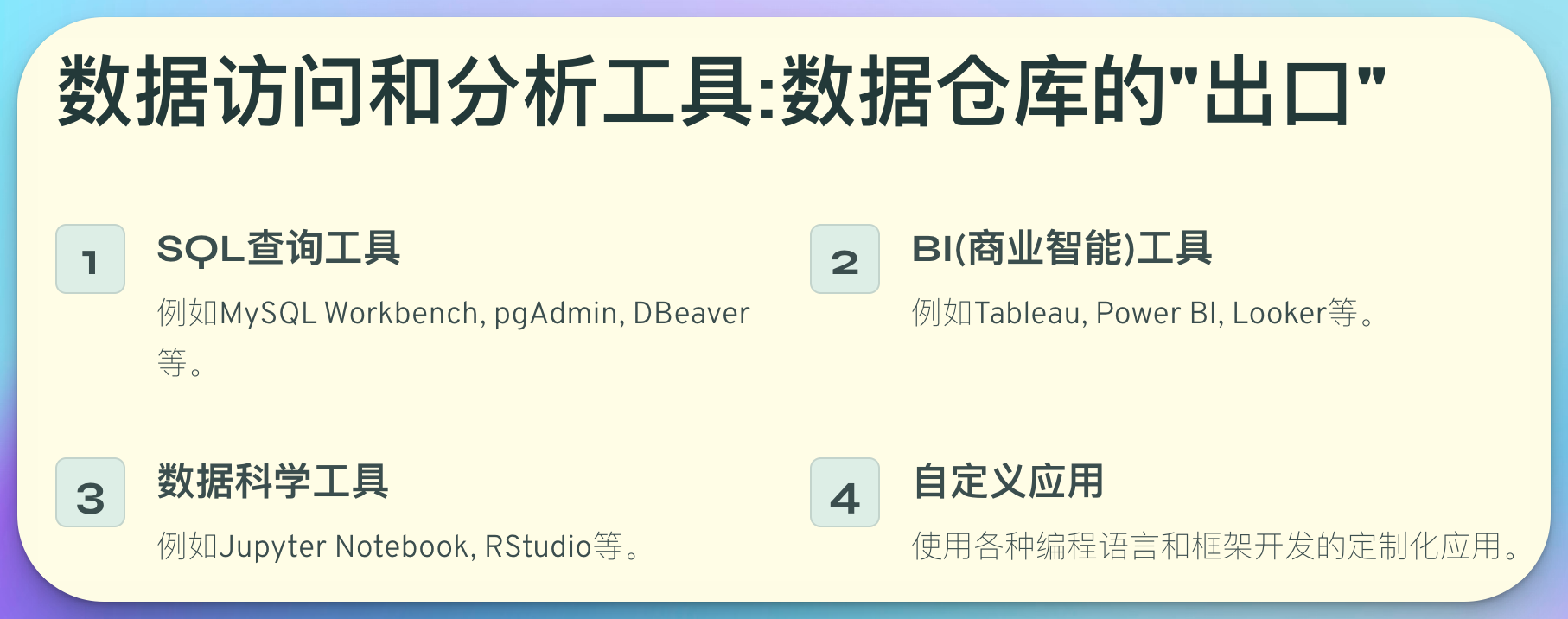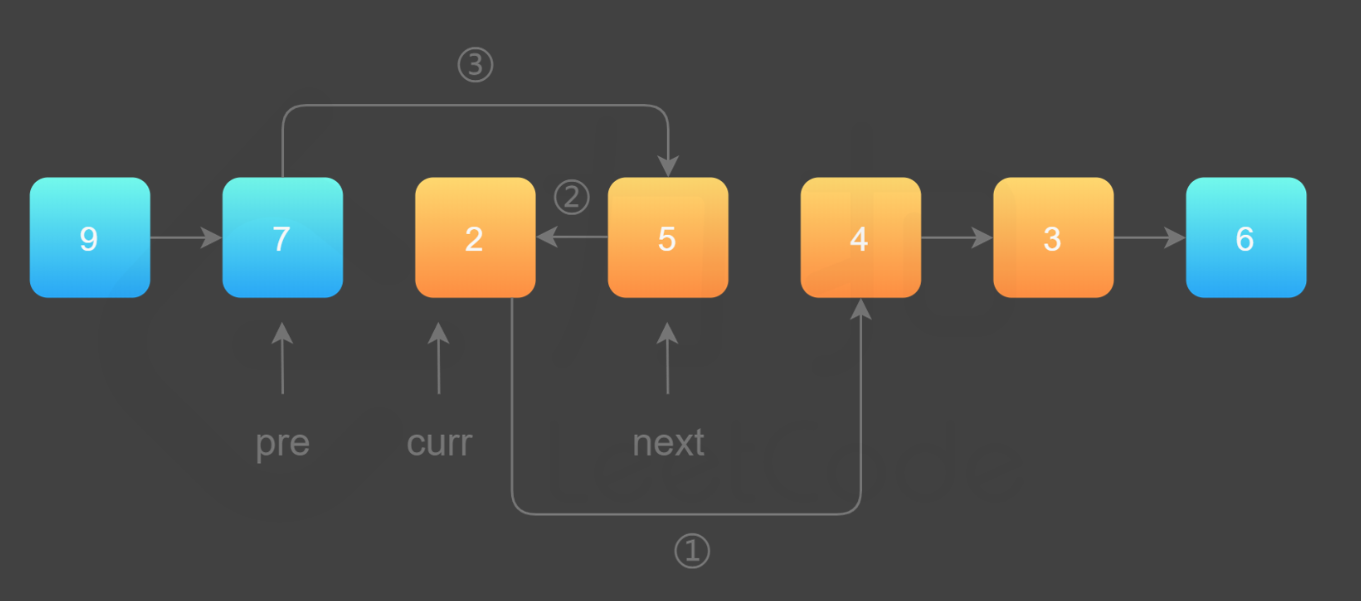目录
1、带头结点的链表
2、创建步骤
3、循环链表
3.1创建循环链表
3.2循环链表的遍历
3.3链表中的闭环
4、静态链表
4.1静态链表初始化
谢谢帅气美丽且优秀的你看完我的文章还要点赞、收藏加关注
没错,说的就是你,不用再怀疑!!!
希望我的文章内容能对你有帮助,一起努力吧!!!

1、带头结点的链表
引入:链表的操作起来比较舒服,但是如果记录(获取)链表长度比较麻烦。需要遍历链表,一个一个 计数,比较费时间(占CPU资源)
所以可以不可以用一个比较特殊一点的结点来保存链表相关的信息?->头结点
- 头结点
头节点其实就是一个特殊的结点,它的类型和其他的结点不一样的,它是专门用来存储链表的一些属性 信息。
struct head {
int length; // 链表长度
结点类型*first; // 首结点地址
结点类型*final; // 尾结点地址
};
注意:
- 头节点不参与链表的长度计数
- 头节点也是不参与链表遍历
- 头节点也不会作为链表的结点
带头结点链表,头节点是在链表中存储链表信息的作用。
注意:当对链表进行增删操作的时候需要对头节点进行及时的更新。
2、创建步骤
- 从无到有
- 创建一个头结点
- 从少到多
- 一个一个正常增加(注意:及时更新头节点的信息)
图示:
***增加节点***

***删除节点(4种情况)***

代码示例:
#include <iostream>
// 结点类型
struct node
{
int data;
struct node *next;
};
// 头节点类型
struct head
{
int length;
struct node *first;
struct node *final;
};
/*
@brief 创建链表
@return 链表的头节点地址
*/
struct head *createNewList()
{
// 申请一个空间
struct head *newList = new struct head;
// 初始化链表属性信息
newList->length = 0;
newList->first = nullptr;
newList->final = nullptr;
// 返回创建好的链表头节点地址
return newList;
}
/*
@brief 头插法增加结点进链表
@param list 需要增加结点的链表的地址
@param data 新结点数据
*/
void addNodeHead(struct head*list,int data)
{
// 先判断链表是否存在
if(!list)
return;
// 申请新结点空间
struct node *newNode = new struct node;
// 结点数据的初始化
newNode->data = data;
newNode->next = nullptr;
// 开始头插法
// 让新节点的next指针指向头节点里面的首结点
newNode->next = list->first; // list->first 表示首结点地址
// 更新头结点中首结点(first)和长度
list->first = newNode; // 让newNode成为新的首结点
list->length++;// 更新链表长度
}
/*
@brief 尾插法增加结点进链表
@param list 需要增加结点的链表的地址
@param data 新结点数据
*/
void addNodeTail(struct head*list,int data)
{
// 先判断链表是否存在
if(!list)
return;
// 申请新结点空间
struct node *newNode = new struct node;
// 结点数据的初始化
newNode->data = data;
newNode->next = nullptr;
// 进行尾插法增加
list->final->next = newNode; // list->final 表示尾结点地址
// 更新头结点中尾结点(final)和长度
list->final = newNode;
list->length++;
}
/*
@brief 删除一个置顶的结点
@param list 需要删除结点的链表地址
@param data 需要删除的那个结点的数据
@return true表示成功,false表示失败
*/
bool delListNode(struct head*list,int data)
{
// 先判断链表是否存在
if(!list)
return;
// 遍历查找元素
struct node *node_ptr = list->first;
// 一个结点的时候
if(list->first->data == data&&list->length == 1)
{
// 直接释放空间
delete list->first;
// 更新首尾结点信息
list->first = nullptr;
list->final = nullptr;
list->length--;
return ;
}
// 判断是否为首结点且数量大于1
if(list->first->data == data&&list->length > 1)
{
// 更新首结点
list->first = node_ptr->next;
node_ptr->next = nullptr;
delete node_ptr;
list->length--;
return true;
}
while(node_ptr->next)
{
// 找到了需要删除的元素
if(node_ptr->next->data == data)
{
// 判断是不是尾结点且数量大于1
if(node_ptr->next == list->final&&list->length > 1)
{
// 更新尾结点
list->final = node_ptr;
// 释放需要删除的元素,再置空
// 原因:node_ptr并非需要删除的元素,它是被删除元素的前一个元素。
delete node_ptr->next;
node_ptr->next = nullptr;
list->length--;
return true;
}
else if(list->length > 1)
{
// 临时存储被删除元素的地址
struct node *delNode = node_ptr->next;
// 更新被被删除元素的next指针:实际就是跳过被删除元素
node_ptr->next = node_ptr->next->next;
// 断开被删除元素的链接
delNode->next = nullptr;
// 释放元素空间
delete delNode;
list->length--;
return ;
}
}
}
}
3、循环链表
循环链表:第一个数据结点和最后一个数据结点相连链表
循环单链表:最后一个数据结点往后就到了第一个数据结点

循环双链表:最后一个数据结点往后就到了第一个数据结点,第一个数据结点往前走就到了最后数据结 点

3.1创建循环链表
3.2循环链表的遍历
用两个指针,一个指针跑,另一个指针不动,当两个指针重叠的时候就跑完了。
代码示例:
#include <iostream>
typedef struct node
{
int data;
struct node *next;
}NodeType;
/*
@brief 为循环链表增加结点
@param list 需要增加结点的循环链表
@param data 新结点数据
*/
NodeType *addNewNode(NodeType *list,int data)
{
// 如果为空作为第一个结点插入
if(!list)
{
list = new NodeType;
list->data = data;
// 自己指向自己,这个就是形成循环的关键了
list->next = list;
return list;
}
// 不是第一结点
NodeType *newNode = new NodeType;
newNode->data = data;
newNode->next = nullptr;
// 如果list指向的是最后加入链表结点(头插/尾插)
newNode->next = list->next;
list->next = newNode;
return newNode;
}
/*
@brief 创建循环链表
@return 返回新循环链表的地址
*/
NodeType *createLoopList()
{
NodeType *loopList = nullptr;
int data = -1;
do
{
std::cin >> data;
if(data == -1)
break;
// 增加结点
loopList = addNewNode(loopList,data);
}while(1);
return loopList;
}
/*
@brief 打印循环链表
*/
void PrintLoopList(NodeType *looplist)
{
if(!looplist)
{
std::cout << "空的" << std::endl;
return;
}
NodeType *node_ptr = looplist;
do
{
std::cout << node_ptr->data << std::endl;
node_ptr = node_ptr->next;
}while(node_ptr != looplist);
}
int main()
{
NodeType*looplist = createLoopList();
PrintLoopList(looplist);
return 0;
}3.3链表中的闭环
链表的尾结点指向了链表中的任意一个随机的结点
求闭环的算法
- 使用两个指针
- 一个移动步数快
- 一个移动步数慢
- 如果两者发生重叠 就形成闭环
- 如果其中一个指针出现空指针的情况 ,就是没有环的
代码示例:
***形成闭环示例***
#include <iostream>
typedef struct node
{
int data;
struct node *next;
}NodeType;
/*
@brief 为循环链表增加结点
@param list 需要增加结点的循环链表
@param data 新结点数据
*/
NodeType *addNewNode(NodeType *list,int data)
{
// 如果为空作为第一个结点插入
if(!list)
{
list = new NodeType;
list->data = data;
// 自己指向自己,这个就是形成循环的关键了
list->next = list;
return list;
}
// 不是第一结点
NodeType *newNode = new NodeType;
newNode->data = data;
newNode->next = nullptr;
// 如果list指向的是最后加入链表结点(头插/尾插)
newNode->next = list->next;
list->next = newNode;
return newNode;
}
/*
@brief 创建循环链表
@return 返回新循环链表的地址
*/
NodeType *createLoopList()
{
NodeType *loopList = nullptr;
int data = -1;
do
{
std::cin >> data;
if(data == -1)
break;
// 增加结点
loopList = addNewNode(loopList,data);
}while(1);
return loopList;
}
/*
@brief 打印循环链表
*/
void PrintLoopList(NodeType *looplist)
{
if(!looplist)
{
std::cout << "空的" << std::endl;
return;
}
NodeType *node_ptr = looplist;
do
{
std::cout << node_ptr->data << std::endl;
node_ptr = node_ptr->next;
}while(node_ptr != looplist);
}
/*
求闭环的算法
*/
bool IsHaveCircle(NodeType *looplist)
{
if(!looplist)
return true;
// 是否有圈
NodeType *fast = looplist; // 慢
NodeType *slow = looplist; // 快
// 循环操作
do
{
// 移动指针
if(fast->next)
fast = fast->next->next; // 移动两步
else // 如果不能移动表示其中一个next是为空
return false;
slow = slow->next; // 移动一步
// 判断有没有为空的指针
if(!fast||!slow) // 只要任意一个指针为空那么就没有环
return false;
}while(fast != slow);
// 相等退出,就是有环
return true;
}
int main()
{
NodeType *looplist = createLoopList();
if(IsHaveCircle(looplist))
std::cout << "有环" << std::endl;
else
std::cout << "没环" << std::endl;
// destoryList();
return 0;
}***无闭环示例***
/*
无头结点的单链表
*/
#include <iostream>
/*
结点类型
*/
typedef struct nodeData
{
// 用来存储数据的空间(成员)称为:数据域
int data;
// 用来保存其他结点的地址(关系)称为:指针域
struct nodeData *next;
}NodeType;
/*
@brief:创建一个新链表
@return:返回新链表的首结点的地址
*/
struct nodeData *createNewList()
{
// 新链表的首结点指针
struct nodeData *newList = nullptr;
// 循环通过数据不断的去增加新结点到链表中
while(1)
{
int data = -1;
// 通过键盘获取数据
std::cin >> data;
// 判断退出条件
if(data == -1)
break;
// 申请了一个新结点的空间
struct nodeData *newNode = new struct nodeData;
newNode->data = data; // 将通过键盘获取到的数据存入结构体的数据域中
newNode->next = nullptr; // 因为它是一个新结点,暂时是没有后继结点
// 增加到链表里面:向后增加(尾插法)
// 做第一次判断:链表中有没有结点
if(newList == nullptr)
{
// 如果newList是nullptr说明该链表里面为空,当前的新节点就是首届点
newList = newNode;
continue; // 继续增加新结点
}
// 搞一个临时指针,来指向首结点
struct nodeData *node_ptr = newList;
// 找尾结点
while(node_ptr->next)node_ptr = node_ptr->next;
// 到这个位置 node_ptr 此时指向的结点是尾结点
// 就可以把newNode作为尾结点的后继结点添加到链表里面去了
node_ptr->next = newNode;
}
return newList;
}
// 打印链表(遍历方法)
void printList(struct nodeData *list)
{
// 判断是不是空链表
if(list == nullptr)
{
std::cout << "链表为空" << std::endl;
return;
}
std::cout << "List( ";
// 如果不为空打印链表元素
while(list) // 只要list不为空就一直循环
{
// list本来就可以表示首结点
std::cout << list->data << " ";
// 让list移动到下一个结点
list = list->next;
}
std::cout << ")" << std::endl;
}
bool IsHaveCircle(NodeType *looplist)
{
if(!looplist)
return true;
// 是否有圈
NodeType *fast = looplist; // 慢
NodeType *slow = looplist; // 快
// 循环操作
do
{
// 移动指针
if(fast->next)
fast = fast->next->next; // 移动两步
else // 如果不能移动表示其中一个next是为空
return false;
slow = slow->next; // 移动一步
// 判断有没有为空的指针
if(!fast||!slow) // 只要任意一个指针为空那么就没有环
return false;
}while(fast != slow);
// 相等退出,就是有环
return true;
}
int main()
{
// 不在栈空间里面申请结点空间
// 创建一个链表
struct nodeData *newList = createNewList();
// 打印链表元素
printList(newList); // 传入的值是newList存储的地址,并非newList自己的地址
if(IsHaveCircle(newList))
std::cout << "有环" << std::endl;
else
std::cout << "没环" << std::endl;
return 0;
}4、静态链表
静态链表是一种使用数组来实现链表概念的数据结构。它通过在每个元素中存储下一个元素的索引来实 现链式存储,从而在有限的空间内实现对大量元素的有效管理。
普通链表
struct node {
int data;
struct node *next;
}; // 结点
静态链表
struct node {
int data;
int next; // 不是指针,而是下标
};
struct node static_list[100]={0};
4.1静态链表初始化
for(int i = 0;i < 100;i ++)
{
static_list[i].data = i+1;
if(i!=99)
static_list[i].next = i+1;
else
static_list[i].next = -1; // 下标不会出现-1
}
插入元素
// 尾插法
int i = 0;
for(i < 100;i++)
if(static_list[i].next == -1)
break;
// 找空位
for(int l = 0; l < 100;l++)
{
if(static_list[l] == NULL)
{
static_list[l] = newNode;
static_list[i].next = l;
}
}
注意事项:
- 静态链表是一种在内存空间有限时使用的数据结构。
- 使用数组和指针来实现链表的功能。
- 初始化静态链表时,需要正确设置每个节点的 data 和 next 指针。
- 在向静态链表添加元素时,需要检查是否已满。
- 访问静态链表元素时,要确保索引有效。
- 静态链表的大小是固定的,因此在设计时需要合理估计最大元素数量。
代码实例:
#include <iostream>
struct node
{
int data; // 数据
int next_index; // 下标
};
#define MAXLEN 20
void addNode(struct node *staticlist[],int data)
{
// 插入元素
if(staticlist[0] == nullptr)
{
staticlist[0] = new struct node;
staticlist[0]->data = 1;
staticlist[0]->next_index = -1;
return;
}
std::cout << __LINE__ << std::endl;
// 找尾元素插入
int pos = 0; // 第一个
while(1)
{
if(staticlist[pos]->next_index == -1)
break;
pos = staticlist[pos]->next_index;
}
// 找到尾元素了
int newPos = 0;
while(staticlist[newPos] != nullptr)newPos++;
// 将新结点加入
staticlist[newPos] = new struct node;
staticlist[newPos]->data = data;
staticlist[newPos]->next_index = -1;
staticlist[pos]->next_index = newPos;
}
int main()
{
// 新建一个静态链表
struct node *staticlist[MAXLEN] = {0};
for(int i = 0;i < 10;i++)
addNode(staticlist,i+2);
// 正常打印
for(int i = 0;i < MAXLEN;i++)
std::cout << staticlist[i] << " ";
std::cout << std::endl;
int pos = 0;
// 链表遍历形式打印
do
{
std::cout << staticlist[pos]->data << " ";
pos =staticlist[pos]->next_index;
} while (pos != -1);
std::cout << std::endl;
}


















